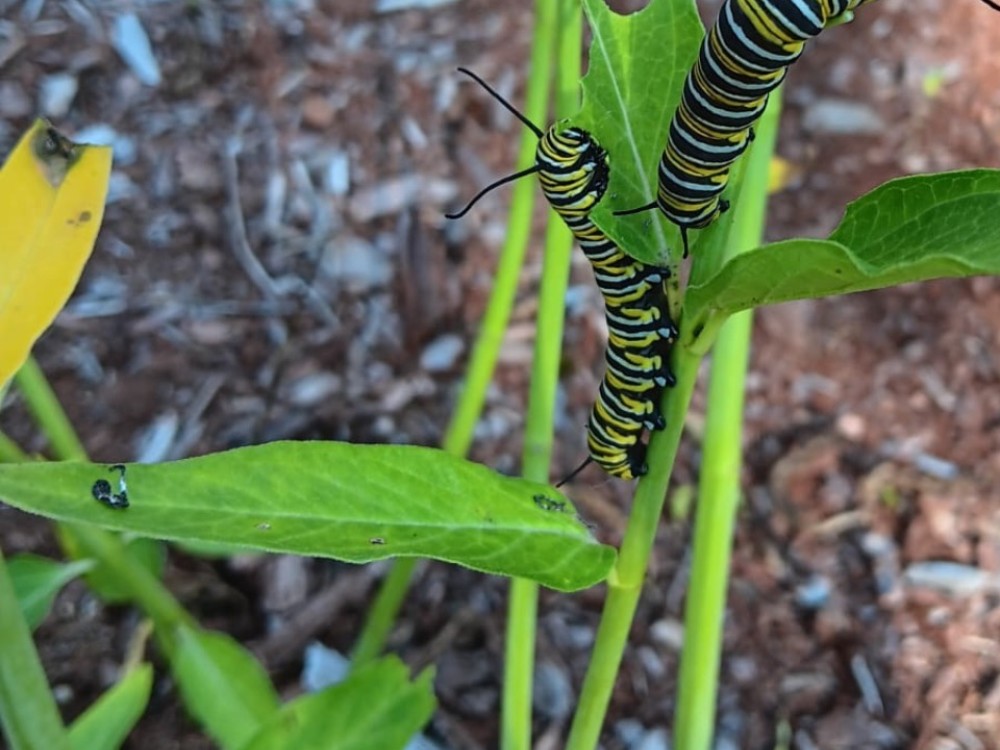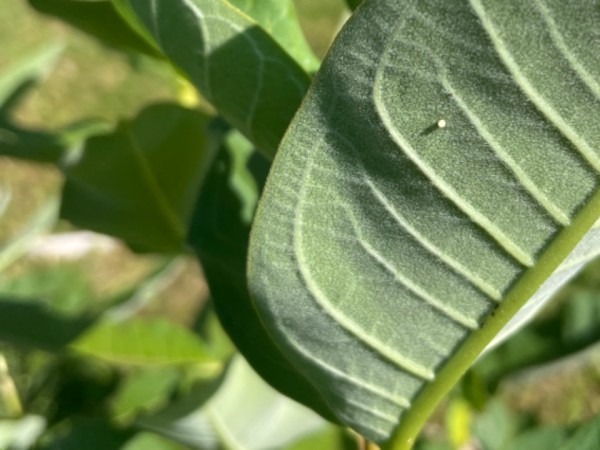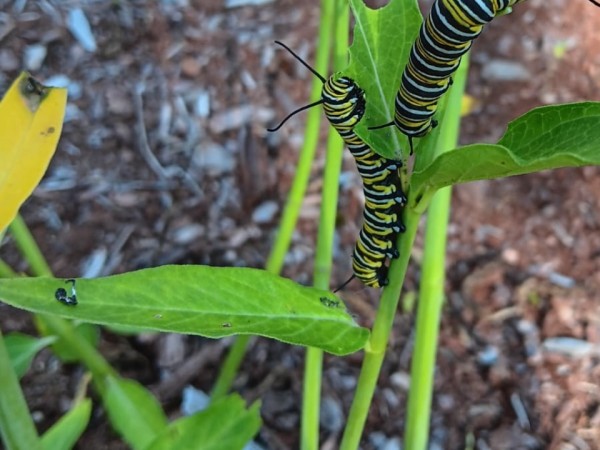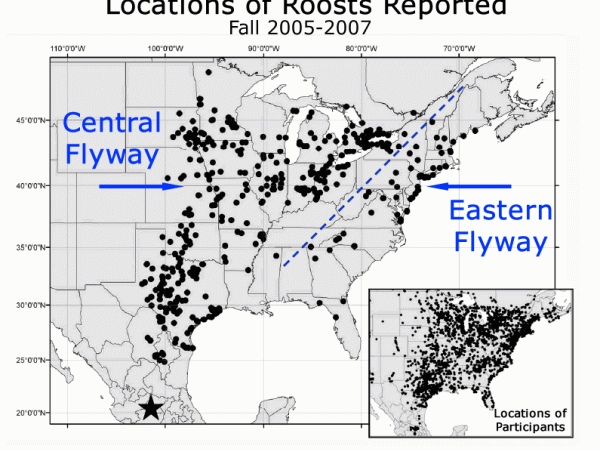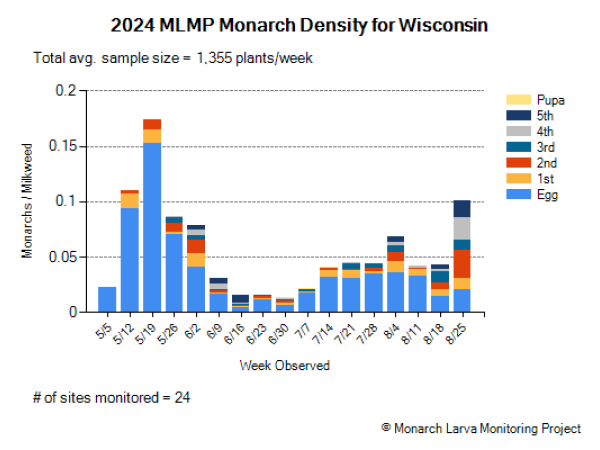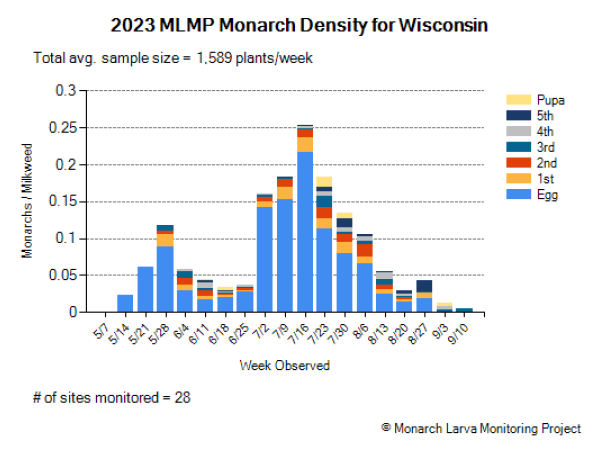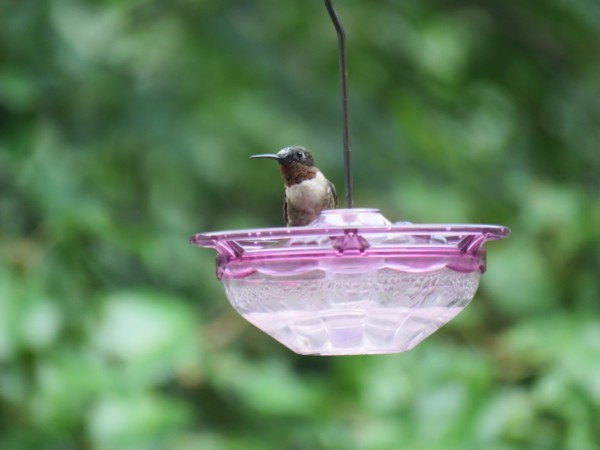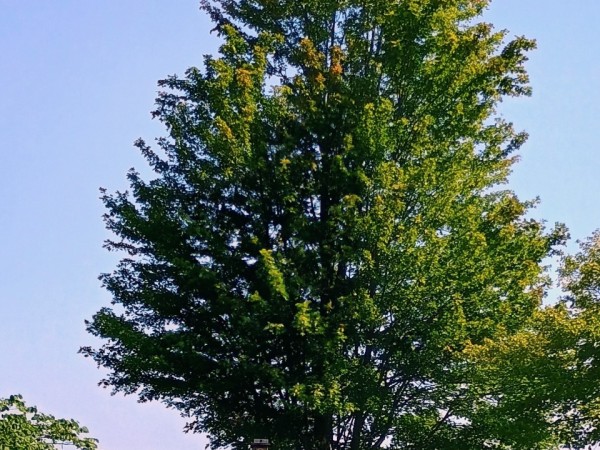Birds on the move, a late summer monarch peak?
Whether we’re ready for it or not, September is around the corner. With the turning of your wall calendars comes the movement of birds and monarchs, though we may not yet be in the full swing of migration.
While the first couple of roost reports have come in for the season, plenty of monarch observers are still reporting eggs or larvae, even in northern locations.
“Female monarchs have been very active in my garden the last few days laying eggs,” wrote Cecilia in North Haven, Connecticut on Aug. 24. “I just found 5 eggs and a caterpillar this morning.”
In Wappingers Falls, New York, Adrienne reported 11 eggs on common milkweed on Aug. 22, writing, “A small, young tight group of three close plants about 18” high had 10 eggs among them.”
Caterpillar reports continue as well, with Roger in Chesapeake, Virginia reporting 14 on Aug. 26 and Debby reporting six from Hunts Point, Nova Scotia on Aug. 25, among others.
Late summer peak?
Results from the Monarch Larva Monitoring Project (MLMP), a project from the UW-Madison Arboretum and Monarch Joint Venture, have shown late August increases in monarch density at monitoring sites in Wisconsin.
Typically, the population increases from spring to summer, with a peak in the middle of July, but this year, the peak is happening later, and has been lower than in the spring in many Midwestern states. You can view this year’s monarch monitoring results in the right column of this page for Wisconsin, with 2023 included for reference as well.
To view results from your state or explore the map, click here.
First fall roosts
As we mentioned, initial fall roost reports have come in as well.
Doug in Barnesville, Minnesota has reported monarch roosts daily over the past week, reporting 12 monarchs on Aug. 23, 63 on Aug. 24, and 25 and 28 on Aug. 26 and 27, respectively.
On Aug. 24, Doug wrote, “Saw roosts tonight of 25, 23, 6, 4, 3 and 2 singles. They were down low and out of the wind on Buckthorn in a Cottonwood understory. They moved from singles on small dead branches last night to group roosts on trees with leaves. It is warm here at 7:30 at 80F and wind SE at 15. Many blooming forbs on the remnant that is holding these Monarchs, they may stay for a while.”
Journey North has been tracking fall roosting since 2002, and Journey North data was published in 2009 to explain two flyways of monarchs in eastern North America: the Central Flyway and Eastern Flyway.
Click here to view a 2023 timelapse of fall roost reports showing mostly the Central Flyway, which funnels monarchs through states like Kansas, Missouri and Oklahoma on their way to Mexico.
You can report fall roosts in their own category on the Journey North reporting site, which you can find here.
Birds on the move
Monarchs are not the only species you can report to Journey North. We also track the movements of robins, bald eagles and hummingbirds in the fall, and migration is picking up!
BirdCast, powered by the Cornell Lab of Ornithology, Colorado State University and UMass Amherst, forecasts bird movements across the United States during spring and fall migration, and we have some big movement ahead of us. BirdCast forecasts 208 million birds will be on the move on the night of Aug. 29 and 251 million birds will be on the move the night of Friday, Aug. 30.
With BirdCast, you can even filter by your location to see just how many birds – and which species – are flying over you each night. It’s a fascinating way to get an idea of what’s going on in the skies at night when most of us are asleep.
Here in Dane County, Wisconsin, over 2.7 million estimated birds crossed over the state last night, according to BirdCast, with American redstarts, Tennessee warblers, eastern kingbirds and magnolia warblers among those expected at this time of year.
Click here to search for your area and explore everything that BirdCast has to offer.
Hummingbird reports
Journey North users continue to submit hummingbird sightings as far north as Muskegon, Michigan and Ipswich, Massachusetts in the past week.
“Three hummingbirds, fat and flying heavy for migration, seen buzzing around this morning at 11 or so,” wrote Jasmin in Muskegon. “All female I believe.”
Male hummingbirds migrate before females, with some leaving as early as July, but other northern males are still hanging around.
“On the alert as feeder wars continue,” wrote Kathy about the feisty hummingbirds in Northbridge, Massachusetts on Aug. 25.
Still seeing hummingbirds near you? Report them to Journey North here.
Everything else
Any other sightings that don’t fit into any of Journey North’s focused reporting categories can be submitted under “Signs of Fall.”
Dianna in Richmond, Indiana, contributed a photo of a tree beginning to turn colors on Aug. 25, writing, “The top of the Autumn Blaze maple is beginning to turn red.”
Thank you for your contributions
Lastly, thank you to everyone who contributed to the International Monarch Monitoring Blitz in late July and early August.
We’re still awaiting final totals from our partners and will have more information in the near future, including maps of all sightings reported, but we wanted to quickly express our thanks now to everyone who contributed sightings of monarch adults, eggs, larvae or milkweed.
We appreciate all of your continued support of Journey North!

